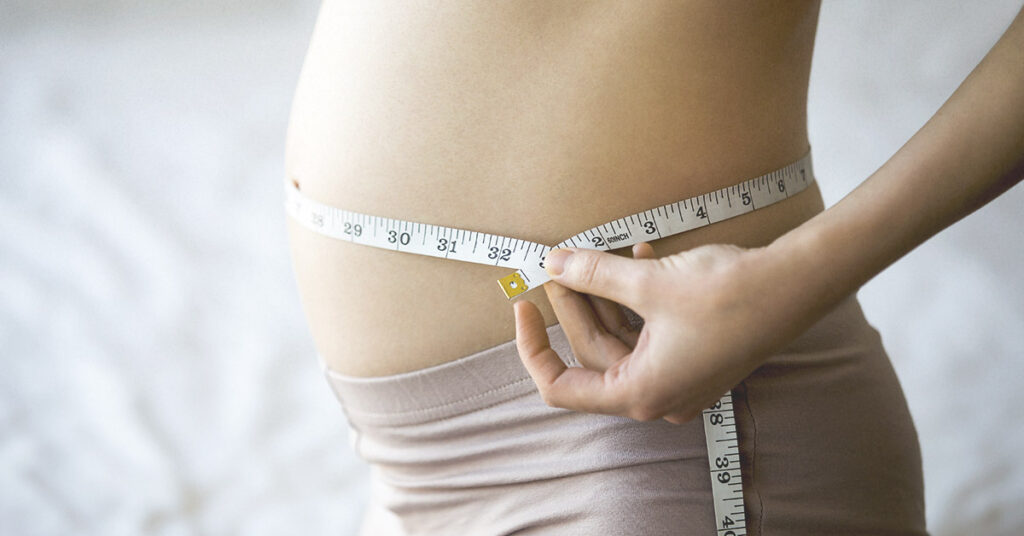For many women, watching a home pregnancy test turn positive is an exhilarating moment. Conception can be easy for some, unexpected for others, or a more complex process that requires patience and professional assistance. While there are many paths to motherhood, once the fetus starts to develop, there should be few surprises. Each trimester brings developmental milestones as well as testing options to make sure that both mother and baby are healthy.
The First Trimester: Twelve Long Weeks
During the initial weeks of pregnancy, a woman may experience a number of physical symptoms…
- Nausea
- Breast tenderness
- Fatigue
- Food Aversions
- Increased appetite
with very few obvious outward changes. Meanwhile, the fetus inside her not-yet-noticeable belly is rapidly developing — despite being only three inches in size and weighing a single ounce. The fetal “neural tube” which forms the brain and spinal cord take shape, while the heart continues to grow larger and beat stronger. In addition, the digestive and circulatory systems are forming. Eyes, ears, facial features, arms, and legs also are developing. By the end of the first trimester, the heartbeat will be audible using a physician’s doppler monitor device.
At this time, the expectant mother should begin making monthly visits to an obstetrician. Around the eight-week visit, the caregiver will discuss prenatal testing options. Modern prenatal DNA testing that screens for chromosomal abnormalities such as Down syndrome and trisomy 13 are easy and safe. All that is required is a simple blood draw. This can happen as early as ten weeks, and results take about a week to process. Assuming a woman’s results indicate a very low risk of a chromosomal problem, it may be time to share the good news. If there is concern over any elevated risk, further testing will be offered. More invasive tests like amniocentesis, which requires a sample of amniotic fluid for analysis, can give a definitive answer as to the chromosomal health of the developing fetus.
The Second Trimester: The Honeymoon Period
As women progress past the 12-week mark, uncomfortable physical symptoms may finally subside. Most women report feeling more energetic during this time. Anatomic development accelerates, and as the baby starts to grow bigger, the bump emerges. The head is still quite large, but the torso starts to catch up with both arms and legs grow longer. The sexual organs also become clear on an ultrasound. By the end of week 26, the fetus may be 12 inches long and weigh two pounds.
Around the 18-week mark, women are offered a comprehensive ultrasound. This test is used to visualize the baby’s development and to check that organs are developing as expected. Gender can be revealed to parents who wish to prepare. If the ultrasound shows that everything is developing as expected, it may be a woman’s last look at her baby until the delivery day arrives. If the ultrasound shows potential concerns, the provider may suggest additional ultrasounds to monitor any issue. If anything appears to be abnormal with the baby’s chromosomes, it is not too late to undergo trisomy testing.
The Third Trimester: Grow Baby Grow
The last thirteen weeks of pregnancy is when the baby does all of its major growing. The lungs must still finish maturing and bones must harden, but by week 36, subtle changes will happen that signify the baby is preparing for birth. From shifting position (moving lower in the uterus and turning head-down) to losing hair that had been covering his or her skin, each week brings the mother and baby closer to a meeting. From 38 weeks on, a baby is considered full-term, likely more than 19 inches in length and 6 pounds in weight.
During the early part of the third trimester, pregnant women undergo a screening called the “glucose challenge.” This is used to check if a woman developed diabetes as a side effect of pregnancy. Gestational diabetes may bring premature delivery or a large-sized baby. A positive result of this screening will lead to another, more specific test for the presence of diabetes.
Once the baby is born, there may be additional tests for any medical issues that could not be assessed during gestation. This is referred to as a newborn screening. Pregnancy can feel like it flies by and most babies are born healthy — so learn what to expect, get organized with your appointments, and then focus on enjoying this very special time.

